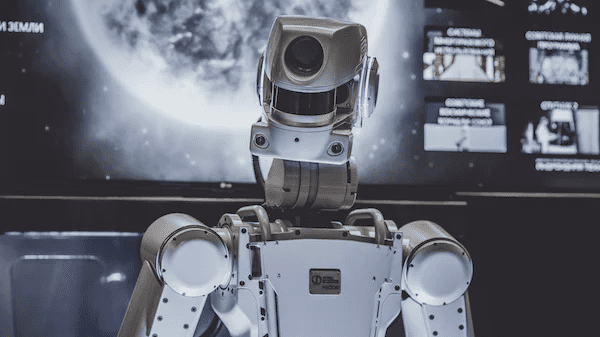The world is increasingly controlled by digital technologies. Big data, artificial intelligence, and self-driving cars – and these are only a small part of what changes or will change our lives, our habits, and the way we conduct business every day. But how can we use machine learning in practice, and why is it a good business investment?

It is the present accessibility of large amounts of data that has made it possible to use machine learning everywhere to solve business issues, but there are two key requirements for this technology to function – the quality of the source data and the debugged model that uses them.
What Is Machine Learning For?
Machine learning is a method of analyzing a large amount of data by algorithms, which can make certain decisions based on analysis and previous experience. Machine learning (ML) automation is actively used in business, as it allows you to create analytical business models. ML enables AI to learn independently, find certain patterns in a large amount of information, and solve the tasks assigned to it.
Artificial intelligence, thanks to machine learning automation, can analyze a large amount of information, classify and structure it, clarify the meaning of data, find errors, errors, and contradictions, make recommendations, and predict malfunctions in equipment or systems.
The introduction of machine learning operations helps to solve tasks such as reducing the costs of transport companies, predicting the behavior of buyers and demand for goods, diagnosing patients, making appointments in hospitals, and many others.
How to Implement Machine Learning Technologies
When the data quality is in order, but the algorithms work on the same laptop of an analyst or data scientist, the next difficult task appears – to implement algorithms into business processes and build a working machine for all analysts or the entire business. A comprehensive solution is needed that collects the necessary data, processes it, predicts the effect of revaluation, and applies scenarios in one tool.
Now big business is stumbling over the lack of an optimization solution on the market, so it is trying to build an in-house solution. Building and implementing a solution requires a huge infrastructure and the efforts of the IT department.

Choose the task and identify a procedure whose flow you can explain in detail. Remember, the program does not take the place of a person or make choices on your behalf. Thus, it is not necessary to automate procedures that involve taking into consideration a lot of variables that occur randomly.
Transfer predictable tasks to ML, such as identifying the document type or the range of permissible modifications in sensor readings.
For ML to operate successfully, it is critical to have so-called “role models”, so it is necessary to prepare them in sufficient quantity in advance: for every category with which the system will compare new examples. And the more accurate and diverse examples you use, the more precise result you will get at the output.

After outlining the procedure verbally, the method must be converted into a format that a machine can understand, such as utilizing one of the current programming languages like R or Python. After the model has been trained first, evaluate it for the correctness and choose the best parameters.
Where can the analyst go if the algorithm does everything by itself?
The algorithms do most of the work that a person can do. By not understanding the new roles, the team can resist innovation and sabotage the process. It is necessary to clarify the roles to avoid such a situation.

After implementing the algorithm, a person will manage the tool instead of searching and structuring data; control pricing instead of working with high-precision calculations of several parameters. The solution guarantees the quality and accuracy of calculations, and the person is engaged in management: receives a forecast, corrects the choice of the optimal scenario, and reacts to the triggering of “warning lights” if a malfunction occurs. The process works in much the same way as the driver’s reaction to the flashing oil change indicator in the car: the manager turns on where the ML cannot cope on its own.
- RELATED – How to fight fraud with Artificial Intelligence
- What are the Advantages of a Good NFT Design?
3 Errors in the Implementation of Machine Learning
Implementing machine learning is difficult and expensive. Let’s figure out how to successfully use technology and not waste money, because machine learning is an excellent tool for optimizing business processes and increasing profits.
Mistake 1: Companies set the wrong goals.
Many attempts to implement machine learning end in failure. One of the reasons is a lack of understanding of the technology’s capabilities and its specifics. It is necessary to define a business goal and to establish indicators by which the success of its achievement will be determined. Based on this, it is necessary to create requirements for machine learning.
Mistake 2: Companies do not pay attention to data collection.
Data collection and storage is one of the key steps in machine learning. It is important to think through this process correctly. Successful application of methods and problem-solving depends on the quality and quantity of data. Otherwise, it can lead to increased labor costs and – even worse – the inability to achieve the goal. Therefore, it is important to take these aspects into account:
- Save “raw” data.
- Take into account the quality and volume of data.
- Take care of the implementation of a system for monitoring and diagnosing data flows.
Mistake 3: Companies build machine learning processes incorrectly
The machine learning process is iterative and experimental. It involves testing algorithms, setting parameters, and constantly monitoring how changes affect metrics. Linear methodologies are not used in machine learning projects, because they lead to problems at later stages of testing and industrial operation. It is necessary to apply flexible methodologies and adapt them to a specific project.
How can you get the maximum benefit?
To implement machine learning in business processes:
- Develop algorithms.
- Deploy an infrastructure that will support data processing, neural network training, and price optimization, taking into account all business constraints.
- Build a monitoring system for the stable operation of the solution.
- Train the team, and adapt the processes and roles of people in the company.
- Design and conduct pilot tests of the system.
- Provide support and regular retraining of the algorithm.
- RELATED – 5 Biggest Tech Breakthroughs of the Last Decade
- Which technologies will be in demand in the future?
Conclusion
Machine Learning is the present popular technology used to operate many processes effectively. It integrates with most of the coding languages and helps users to achieve their goals easily. As provided in this article, there are many advantages with Machine Learning Technology.
I hope this tutorial helped you to know about Operationalizing Machine Learning in Processes. If you want to say anything, let us know through the comment sections. If you like this article, please share it and follow WhatVwant on Facebook, Twitter, and YouTube for more Technical tips.
Operationalizing Machine Learning in Processes – FAQs
What is Machine Learning operationalization?
Machine Learning operationalization is a process or methodology, not a particular type of software. It applies tools and resources to ensure that machine learning projects are run properly and efficiently, including data governance, model management, and model deployment.
Why is MLOps important?
MLOps accounts for the unique aspects of AI/ML projects in project management, CI/CD, and quality assurance, helping you improve delivery time, reduce defects, and make data science more productive. MLOps refers to a methodology that is built on applying DevOps practices to machine learning workloads.
Is MLOps a methodology?
MLOps methodology includes a process for streamlining model training, packaging, validating, deployment, and monitoring. This way you can run ML projects consistently from end to end.
What is the difference between MLOPs and DevOps?
The difference between MLOPs and DevOps is that DevOps focuses on application development whereas MLOps focuses on machine learning.
Is Kubernetes MLOps?
Kubernetes, a DevOps tool open-sourced in 2014 and since adopted by over half of organizations worldwide, has similarly become the preferred MLOps tool to manage automated machine learning pipelines in a reproducible, safe, and scalable way.
